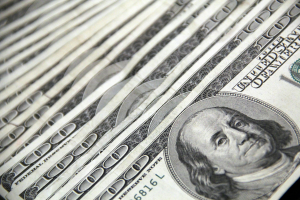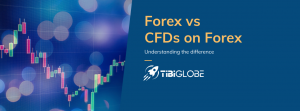Do you believe in Santa Claus? If not, now is a good time to start because Wall Street is arguably the first to join the cheer of what traders generally call – the Santa Claus Rally. Beyond the anecdotal effect, it is the trading period spanning the last five trading days of December and the first two trading days of January.
Since 1950, stock traders have observed a specific behaviour of the S&P 500, which typically gains 1.3% on average and maintains a positive tone for most of this period. However, the first to name the last trading sprint of the year was Yale Hirsch, a stock market analyst and founder of the Hirsch Organization and the famed Stock Trader’s Almanac.
The term “Santa Claus Rally” was popularised by the Almanac in 1972. “Despite all of the high-frequency trading and algorithmic trading and the velocity of markets these days… patterns [like the Santa Claus rally] continue to persist”, Jeffrey A Hirsch, editor of the Stock Trader’s Almanac and Yale Hirsch’s son, noted.
Multiple theories circulate around the Santa Claus rally, including increased holiday shopping, seasonal optimism, end-of-tax-year considerations, and ease of institutional trading activities since many organisations take a breather.
But is the Santa Claus rally always a rule? Although historically, 79% of the time, stock prices have surged as the holiday cheer spreads to the financial markets, the opposite scenario can also happen. And when the Grinch gets his hands on Santa’s bag – stocks slump during the last week of the year – it often signals a market downturn.
In 1999, the S&P 500 tumbled 4% during the Santa Claus rally, which had a domino effect on the Dow Jones, which skidded 37.8% over the following 33 months. A similar pattern was observed in 2007, which preceded the blistering financial crisis of 2008.
Potential signs of an approaching Santa Claus rally in 2024
December has so far been quite stingy with stock investors. Yet, not all hope is lost as investors prepare themselves for some holiday cheer. Nevertheless, whatever the tail end of 2024 may look like, analysts warn of potential headwinds going forward.
Meanwhile, the S&P 500 is up more than 24% YTD despite the 2.5% loss last week, the worst since mid-November. This is a good enough reason to cheer, and it’s not the only potential sign of a Santa Claus rally.
The Dow gained 500 points or 1.2% on December 20, the S&P 500 added 64 points or 1.1%, and the tech-heavy Nasdaq climbed by 200 points or 1%. Russell followed suit, adding 20 points or 1%, and the Equal Weighted S&P soared by 1.4% or 100 points, indicating healthy market participation.
But let’s look at the bigger picture. Last week, the Dow, the Russell and the Equal Weighted S&P were all lingering in “oversold” territory.
Yet, the weaker-than-expected PCE m/m reading which came in at 0.1%, down from 0.2% and the downbeat Core PCE m/m of 0.1%, below the previous 0.3%, in the same bag with below-estimate Y/y and Core y/y reads, drove stocks from negative well into positive territory on December 20.
However, caution must be exercised, as some stock rallying signs may be overestimated. At the same time, Fed Chair Powell indicated that the number of rate cuts in 2025 might not be the number expected because the economic data shows signs of strength and the labour market is also upholding.
Instead, the Fed will apply a “judicious amount” of rate cuts, meaning just about enough not to push the economy into overdrive, according to Chicago Fed President Austan Goolsbee.
Despite the Chicago Fed’s language, the markets seem to have already priced in potentially 3-4 rate cuts upcoming in 2025. The so-called “fear index” VIX pulled back on all the joy and cheer, skidding 24% on December 20 to go up 3% on December 23, during the first hours of US trading.
In a chain reaction, oil lingered in the $69.25 area, while gold dropped $15 on December 23, trading below the intermediate trend line. Nevertheless, on December 24, the yellow metal seemed to have regained its shimmer on the back of retreating bond yields and a hawkish Fed stance.
Peaking around $2,620 in the last hour of the Asian session, the precious metal clings to modest gains against the backdrop of the geopolitical unrest and Trump’s tariff policy.
Meanwhile, oil remains in the area of $69.50 per barrel, as traders prepare for some holiday action. Ready to join the fun?
Risk Disclaimer:
CFDs are complex instruments and come with a high risk of losing money rapidly due to leverage. You should consider whether you understand how CFDs work and whether you can afford to take the high risk of losing your money. Prices can fluctuate rapidly, and past performance is not indicative of future results. Please refer to the full risk disclaimer on our website.
The information provided does not constitute financial advice and should not be relied upon as such. You should seek independent advice before making any investment decision.








